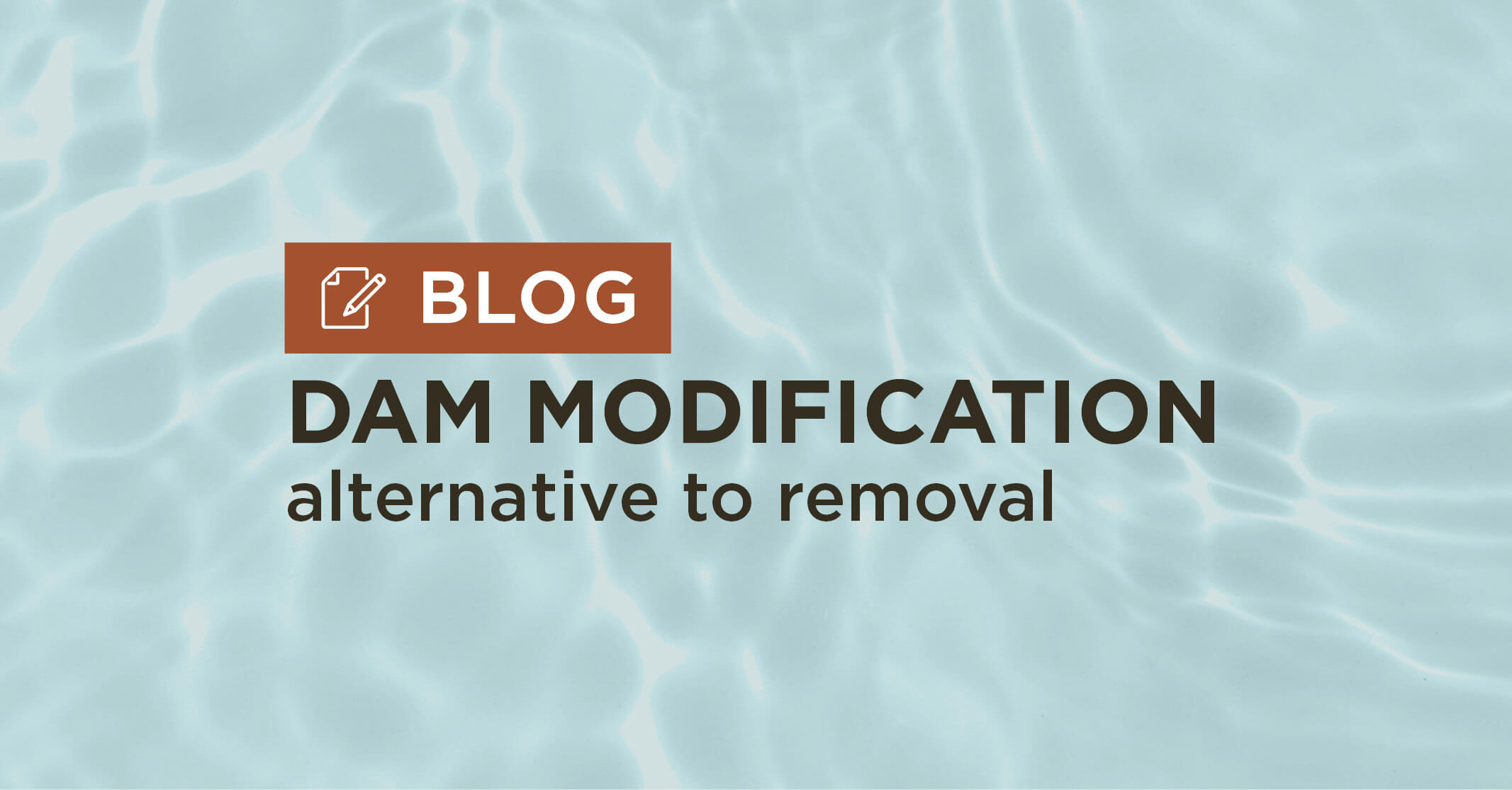With a reputation for disrupting the natural flow of rivers and blocking migratory fish passages, dams have cemented themselves as one of the most controversial pieces of infrastructure around the globe. Unfortunately, this controversy often overshadows the many benefits dams provide when properly updated and maintained. While many feel that removal is the only option when a dam has reached the end of its useful life, there is another option — dam alternatives and modification.
What is Dam Modification?
The dam modification process leaves a portion of the original structure in place at its current location, but design and/or river changes are made. Modifications may include adjustments to the slope of the river bed, upstream pool, or scour pool on the downstream side of the dam. Popular methods to modify a dam include partial removal, rock riffles, rock arch rapids, and rock ramps.
Partial Removal
Removing only a section of a dam is a common modification practice to improve natural and aquatic resources along with increased safety for recreational river users. Features that can be partially removed include gates and spillways.
In some instances, like the Hydroelectric Dam in Fort Dodge, Iowa, the original spillway was partially removed, leaving only a section that will be used as a drop feature for kayakers. The headwalls, powerhouse, and a portion of the tainter gate remained in place to provide bank protection and keep some of the structure’s historical integrity intact.
Rock Riffle
Rock riffle consists of rows of boulders and rock slopes installed downstream of a dam to resemble natural rapids. Instead of spilling over the dam in a steep vertical drop, water descends gradually over the rock riffle. The dam still holds water to maintain upstream pools.
On the Squaw Creek project in Ames, Iowa, a water main located downstream was in danger of being exposed to erosion caused by recirculating dam currents. Construction of a rock riffle and low-flow benches, along with stabilization of the streambanks rectified the erosion issue.
“Squaw Creek was intended to be a streambank stabilization and water main protection project,” Snyder & Associates Civil Engineer Steve Klocke says. “Given low-head dam’s proximity to the project, FEMA insisted that it be addressed and doing so further enhanced the benefits of the project.”
Rock Arch Rapids
Another dam modification method is to scale down its height to reduce the recirculating water effect. A rock and boulder complex added upstream from a dam creates a rock arch rapids. Caution and awareness are still required while traversing the rapids, but the hazard posed by the dam is no longer an issue.
Rock Ramps
Similar to rock arch rapids, rock ramps are another cost-effective alternative to dam removal. To modify a dam in this manner, a rock and boulder complex is added to the scour pool on the downstream side of the dam. The additional rock fills in the scour to create a stable slope. The height of the dam may be lowered, as well, depending on the height of the structure.
Spillway Modifications Improve Environmental Conditions
As a close relative to dams, spillways can also be modified to promote fish passage and prevent the spread of invasive species. For example, Snyder & Associates redesigned the spillway at Easter Lake, in Iowa, to prevent invasive species from entering the lake during high water and flood events. Managing invasive species is important both ecologically and economically.
To help prevent the introduction of invasive species, a fish barrier was designed with a structural steel exclusion system built into the concrete portion of the spillway. This system works together with a vertical barrier component to keep desirable fish in and undesirable fish out.
Several U.S. waterbodies have been invaded by harmful invasive species, including zebra mussels (Dreissena polymorpha), Asian carp (Cyprinus carpio), and hydrilla (Hydrilla verticillata). They’re considered invasive for their tendency to:
- Overrun native habitats
- Deplete food resources for native species
- Multiply quickly
- Spread easily
- Block sunlight
- Deplete oxygen
“Several invasive species tolerate winter temperatures and thrive during the summer,” explains Nichoel Church, Environmental Scientist with Snyder & Associates. “Treatment and management options can be very expensive and perpetual.”
Benefits of Dam Modification Vs Removal
There are circumstances when the benefits of modifying dams outweigh completing a full dam removal. Typically, these occur when removal would cause socially unacceptable outcomes, such as the loss of flood protection for populated areas, the loss of wetlands created by the dam, or the loss of energy from a hydropower project.
However, when warranted, modification can improve stream water quality, reintroduce aquatic species up and downstream from the site, and increase recreation while still maintaining some control of flows. Dam modification is primarily practiced with low-head dams, as they pose the most significant safety risk. Transforming the structure’s design reduces the risk of drowning by altering the water’s vertical drop and cyclical undercurrents. Still, it can be applied to other dam varieties, depending on size, location, and overall condition.
Dam Modification Cost and Funding Options
Dam modification projects often take on a life of their own due to the unique combination of human and environmental contexts linked to each specific dam. This is why it’s imperative to work with professionals, like the team at Snyder & Associates, that understand the permitting and funding processes.
Funding options for dam modification projects come with pros and cons. Modification projects typically result in lower overall project costs due to a portion of the original dam being left intact. However, while expenses may be lower, funding can be more challenging to obtain. It’s often easier to procure funding sources for full removals since this method has a greater connection with the waterway.
“Whether it’s full removal or modification, design, permitting, and construction are all there. Each one of those is a component of both processes. The only difference is with modification, a portion of the dam remains in-stream,” shares Church.
